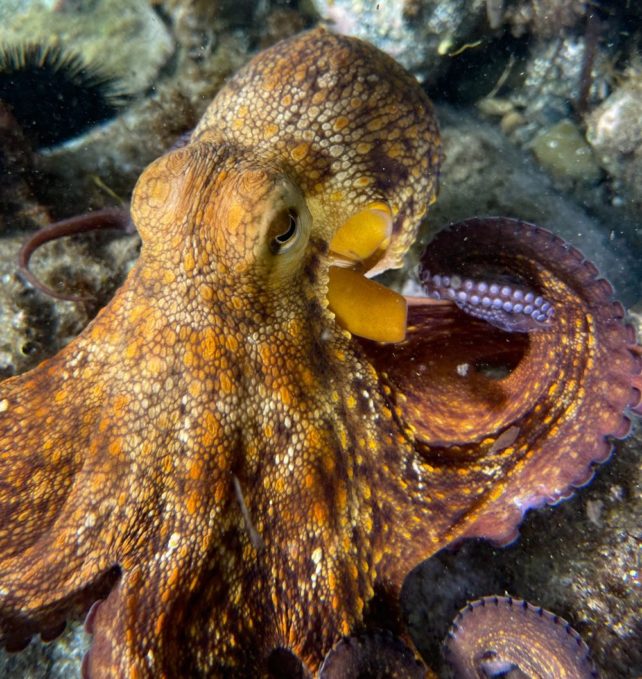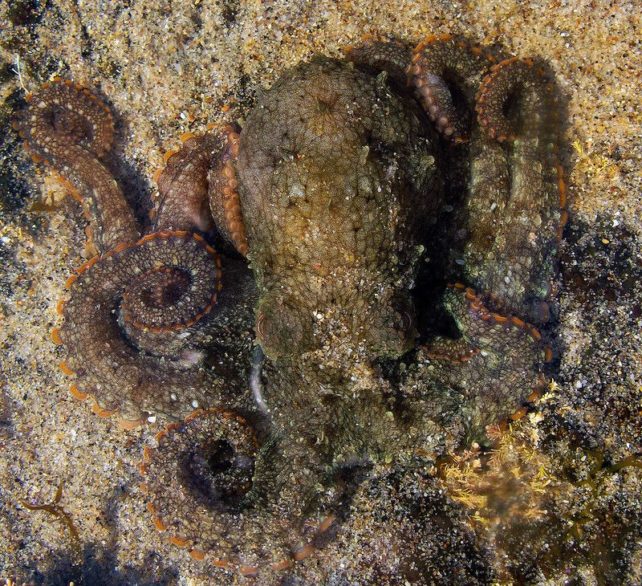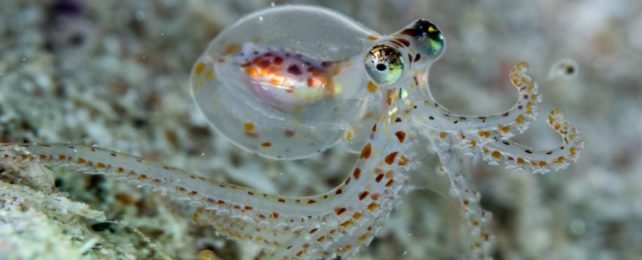Our glorious little blue marble of a planet is filled with an astonishingly diverse array of lifeforms, but some are definitely more peculiar than others.
This is particularly true of the octopus, an animal so strange that it regularly invites comparisons to aliens.
Indeed, if there is any creature on Earth that's strange enough to have evolved elsewhere, according to British neuroscientist Anil Seth, it's the octopus. Some fringe theories even propose that octopuses could be aliens.
However, there's plenty of evidence to tie octopus evolution firmly to Earth, and a team of scientists led by systems biologist Nikolaus Rajewsky of the Max-Delbrück-Center for Molecular Medicine has just found a new one.
And it's a really intriguing one.
It's a trait that octopus brains actually share with human brains, and the brains of other vertebrates: a huge repertoire of microRNA in their neural tissue.
"This," Rajewsky says, "is what connects us to the octopus!"
Octopuses are strange in many ways. They're smart, too, as are other cephalopods, such as cuttlefish. And squid brains have been found to be nearly as complex as the brains of dogs. There's even evidence to suggest that octopuses can dream – rarely confirmed in invertebrates.
Unlike other intelligent animals, their nervous system is highly distributed, with a significant proportion of its 500 million-odd neurons spread throughout their arms. Each arm is capable of making decisions independently and can even continue to react to stimuli after being severed.

The complex nervous system and intelligence of cephalopods have been something of a puzzle. These traits are relatively common in vertebrates, but they really stand out among invertebrates.
There's something else really odd about octopuses and other cephalopods. Their bodies can rapidly edit their RNA sequences on the fly to adapt to their environment. This is not how adaptation usually works; normally, it starts with the DNA, and those changes are passed on to the RNA.
This set Rajewsky to wondering what other RNA secrets octopuses might be hiding.
Analyzing 18 samples obtained from dead octopuses – supplied by the Stazione Zoologica Anton Dohrn marine research institute in Italy – Rajewsky and his team sequenced RNA mainly from from Octopus vulgaris, the common octopus. Also included in the study was a whole California two-spot octopus (Octopus bimaculoides) and a Hawaiian bobtail squid (Euprymna scolopes).
The sequencing provided a profile of the messenger RNAs and small RNAs therein. And the results were a surprise.

"There was indeed a lot of RNA editing going on, but not in areas that we believe to be of interest," Rajewsky explains.
What the team found was that octopuses have a lot of microRNA, or miRNA. They found 164 miRNA genes grouped into 138 miRNA families in the common octopus, and 162 miRNA genes grouped into the same 138 families in the California two-spot octopus. And 42 of the families were new, mostly in the brain and neural tissue.
miRNA are non-coding RNA molecules that are heavily involved in regulating gene expression, binding to larger RNA molecules to help cells fine-tune the proteins they create.
The fact that these miRNA families were preserved in the octopus, as were the RNA binding sites, suggests that they still play a role in octopus biology, although the scientists don't yet know what that role is, or which cells the miRNAs are involved with.
"This is the third-largest expansion of microRNA families in the animal world, and the largest outside of vertebrates," says biologist Grygoriy Zolotarov, now at the Centre for Genomic Regulation in Spain, formerly of Rajewsky's lab.
"To give you an idea of the scale, oysters, which are also mollusks, have acquired just five new microRNA families since the last ancestors they shared with octopuses – while the octopuses have acquired 90!"

The only comparable expansions occurred in vertebrates, although the scale is a little different. The human genome encodes, for context, around 2,600 mature miRNAS. But the octopus miRNA family count is on par with those of animals such as chickens and frogs.
The discovery, the researchers say, suggests that complex intelligence, including cephalopod smarts, may be related to this miRNA expansion.
Interestingly, this isn't the only similarity between octopus brains and those of vertebrates. Scientists previously found that human and octopus brains both contain a high number of DNA segments called transposons. It seems like there's a lot more going on in an octopus's head (and arms) than we understand.
The next step for Rajewsky's team is to try to figure out exactly what those miRNAs are doing.
"The notable explosion of the miRNA gene repertoire in coleoid cephalopods may indicate," the researchers write, "that miRNAs and, perhaps, their specialized neuronal functions are deeply linked and possibly required for the emergence of complex brains in animals."
The research has been published in Science Advances.
